1. What is Remote Physiological Monitoring
Remote Physiological Monitoring (RPM) is the use of digital technologies to collect medical and other forms of health data from individuals in one location and electronically transmit that information securely to healthcare providers in a different location for assessment, recommendations, and management. This represents a fundamental shift from episodic, reactive care in a clinic to continuous, proactive management in the patient’s home.
RPM addresses a critical flaw in the traditional healthcare model: the “data desert.” For centuries, clinical decisions were based on sparse data points collected during brief, infrequent office visits. This provided a poor representation of a patient’s health status, especially for chronic conditions that fluctuate daily. RPM fills this desert with a continuous stream of objective, real-world data, enabling data-driven clinical interventions before a condition escalates into a crisis.
2. The Inception and Evolution of RPM: From Niche to Mainstream
2.1 The Pre-RPM Landscape: The Data Desert Between Visits
Prior to RPM, monitoring a patient’s chronic condition was primitive. Patients might be given a paper log to manually record blood pressure or blood glucose readings—a process prone to error, forgetfulness, and “white coat syndrome” (artificially elevated readings in a clinical setting). This data was often days or weeks old by the time a provider reviewed it, making it useless for preventing an acute event. The only way to get actionable data was through an expensive and inconvenient hospital admission for telemetry.
2.2 Technological and Theoretical Foundations
The convergence of three technological trends made RPM feasible:
- Miniaturization and Consumer Electronics: The development of accurate, FDA-cleared, user-friendly devices (blood pressure cuffs, glucometers, pulse oximeters, weight scales) that are Bluetooth-enabled.
- Connectivity: The near-ubiquity of cellular networks and home Wi-Fi, allowing devices to transmit data automatically without patient intervention.
- Data Platforms: The rise of secure cloud-based platforms and EHR integrations that can aggregate, analyze, and present patient data to clinicians in an actionable format.
The theoretical foundation is rooted in the same Chronic Care Model that underpins CCM, emphasizing supported self-management and proactive, data-driven decision-making.
2.3 Legislative and Reimbursement Catalyst: The CMS Coding Revolution
Technology existed for years, but reimbursement was the final barrier to widespread adoption. CMS began recognizing the value of remote data with code 99091 (collection and interpretation of physiologic data, at least 30 minutes), but uptake was slow.
The watershed moment came in 2019 when CMS introduced a dedicated family of CPT codes for RPM, providing clear and favorable reimbursement rules:
- 99453: Set-up and patient education on the use of equipment.
- 99454: Supply of the device with daily recordings and transmission of data for 16 days in a 30-day period.
- 99457: Remote monitoring treatment management services, requiring at least 20 minutes of clinical staff/physician time for monitoring, data review, and care management in a calendar month.
- 99458: Add-on code for each additional 20 minutes (used with 99457).
This structured coding framework, with its requirement for interactive communication, transformed RPM from an interesting pilot project into a financially viable clinical service line.
3. Remote Physiological Monitoring Today: Program Specifications
3.1 Definition and Core Components
RPM is the collection and analysis of physiological data via a digital device that is used to monitor and manage a patient’s health status. The core components are:
- FDA-Cleared Device: The medical device used must be FDA-approved as a medical device (many consumer wearables like Fitbits are not, though this is evolving).
- Data Transmission: The device must digitally (automatically) upload data to the provider. Manual patient entry does not qualify.
- Clinical Review and Intervention: A healthcare professional must review the data and use it to inform clinical management decisions, which are communicated to the patient.
3.2 CPT Codes and Billing Requirements
The current RPM code set allows for billing both the technical and professional components:
- 99453: One-time payment for initial setup and patient education. Billable once per episode of care.
- 99454: Monthly payment for the device supply and daily data transmission. Requires at least 16 days of data in a 30-day period.
- 99457: Monthly payment for the first 20 minutes of clinical staff time for data review, interpretation, and communication with the patient.
- 99458: Monthly add-on code for each additional 20 minutes of clinical time.
- 99091: An older code for at least 30 minutes of data review and interpretation by a physician or other qualified health professional. It cannot be billed in the same month as 99457/99458.
Key Requirements: Patient consent must be obtained. RPM can be ordered by a physician or non-physician practitioner (NPP). Services are billed for established patients only.
3.3 Eligible Practitioners, Patients, and Devices
- Eligible Practitioners: Physicians, Nurse Practitioners, Physician Assistants, Clinical Nurse Specialists, Certified Nurse Midwives, Clinical Psychologists.
- Eligible Patients: Primarily Medicare Part B beneficiaries with acute or chronic conditions that can be managed or tracked by collected data (e.g., Hypertension, Heart Failure, Diabetes, COPD, Obesity).
- Eligible Devices: Must be a medical device as defined by the FDA. Common examples include:
- Blood Pressure Monitors
- Glucose Meters
- Pulse Oximeters
- Weight Scales (particularly for Heart Failure patients)
- Spirometers (for COPD/Asthma)
- ECG Monitors (e.g., for arrhythmia detection)
4. The Evidence Base: A Summary of Studies Demonstrating Benefits
The clinical and economic evidence for RPM, particularly for specific high-cost conditions, is robust and growing.
4.1 Clinical Outcome Improvements
- Hypertension (HTN): RPM is arguably most proven in HTN management. Numerous studies, including a landmark meta-analysis in The Lancet, show that RPM leads to significantly greater reductions in both systolic and diastolic blood pressure compared to usual care.
- Heart Failure (HF): RPM is a Class I Recommendation from the American Heart Association for reducing readmissions. Monitoring daily weights allows clinicians to detect fluid overload early and adjust diuretics over the phone, preventing hospitalization. Studies show 30-50% reductions in HF-related readmissions.
- Diabetes: RPM of blood glucose levels leads to improved HbA1c control, reduces hypoglycemic events, and allows for more timely medication adjustments.
- COPD: Monitoring oxygen saturation and symptoms can predict and prevent exacerbations, reducing ED visits and hospitalizations.
4.2 Patient Experience, Engagement, and Empowerment
- Improved Satisfaction: Patients report feeling safer and more connected to their care team, knowing their data is being watched.
- Activation and Education: RPM transforms patients from passive recipients of care into active participants. They see the direct impact of their behaviors (diet, medication adherence) on their physiological data, fostering greater engagement.
- Convenience: Reduces the burden of travel to clinics for routine monitoring, a significant benefit for elderly, rural, or disabled populations.
4.3 Healthcare Utilization Reductions and Cost Savings
This is where RPM delivers its most powerful argument. The core value proposition is prevention.
- Reduced Hospital Readmissions: This is the most significant source of savings. For a condition like Heart Failure, where a single readmission can cost over $15,000, preventing even a few admissions pays for an entire RPM program for hundreds of patients.
- Reduced ED Visits: Early intervention for abnormal trends prevents crises that would otherwise lead to an ED visit.
- Optimized Office Workflow: RPM can reduce unnecessary routine visits while identifying the patients who truly need to be seen, allowing clinics to operate more efficiently.
A Landmark Study (The VA Health System): The Veterans Health Administration’s Care Coordination/Home Telehealth program is one of the largest and longest-running RPM programs. A comprehensive analysis found:
- A 25% reduction in days of inpatient care.
- A 19% reduction in hospital admissions.
- Patient satisfaction scores exceeding 85%.
- An average cost savings of $1,999 per patient per year.
5. The Economic Argument: Expenditure vs. Strategic Investment
5.1 The Traditional (Siloed) View: RPM as a Costly Tech Expenditure
This view focuses on the immediate, visible line items:
- Perspective: A clinic manager or payor analyst sees new costs: purchasing devices, subscribing to a platform vendor, and paying staff for time spent monitoring data.
- The Argument: “We are now paying for devices and for clinicians to stare at screens. This is a new, additive cost on top of our existing workflow. The reimbursements ($50-$150 per patient per month) may not cover our fully loaded costs, and it’s a logistical hassle.”
- The Flaw: This is a classic case of cost displacement fallacy. It fails to account for the massive reduction in high-cost, negative health events ( admissions, ED visits) that RPM prevents. It views RPM in isolation rather than as a tool that fundamentally alters the patient’s clinical trajectory and cost profile.
5.2 The Value-Based (Systems) View: RPM as a High-ROI Investment
This view analyzes the total cost of care (TCOC) for a population.
- Perspective: A health system CEO, an ACO director, or a forward-thinking payor looks at the budget for a population of 10,000 patients with heart failure.
- The Argument: “Spending $500,000 per year on a comprehensive RPM program for our 500 highest-risk HF patients is an investment in stability. If it reduces their readmission rate by just 20%, it will prevent approximately 50 readmissions per year. Avoiding 50 readmissions at $15,000 each saves us $750,000. This generates a net savings of $250,000 while simultaneously improving outcomes and patient satisfaction. This is the definition of value.”
- The Logic: RPM is not a cost; it is a high-yield capital investment. The ROI is measured in avoided crises.
5.3 Quantifying the Return on Investment (ROI)
The math is compelling, especially for high-risk populations:
Scenario: A Health System’s Heart Failure RPM Program
- Target Cohort: 200 high-risk HF patients.
- Monthly RPM Cost (Device, Platform, Staff Time): ~$100 per patient = $20,000/mo ($240,000/yr)
- Cost of One Avoidable HF Readmission: ~$15,000
ROI Calculation:
- To simply break even, the program must prevent: $240,000 / $15,000 = 16 readmissions per year.
- For a cohort of 200 patients with a historical readmission rate of 25%, we would expect 50 readmissions per year without intervention.
- A conservative, evidence-based goal is a 30% reduction in readmissions, preventing 15 readmissions.
- Cost of Prevented Readmissions: 15 x $15,000 = $225,000
- Net Annual Savings/Loss: $225,000 (savings) – $240,000 (cost) = -$15,000 (a slight loss)
However, this simplistic view misses the full picture. True ROI includes:
- Saved ED Visits: Preventing 30 ED visits at $2,500 each = $75,000.
- Reimbursement Revenue: Medicare pays for RPM codes (~$100/patient/mo), which offsets the program’s internal cost.
- Performance Bonuses: In value-based contracts, reduced readmissions directly lead to shared savings bonuses and avoidance of CMS penalties.
- Improved Clinic Capacity: Fewer crises free up appointment slots for new patients.
When all factors are considered, a well-run RPM program consistently demonstrates a positive ROI within 12-18 months, with ROI increasing over time.
6. Challenges, Limitations, and The Future of RPM
- Challenges: Digital literacy and access (the “digital divide”), patient adherence to using devices, clinician alert fatigue, data integration into EHRs, and upfront investment costs.
- The Future: The future of RPM is bright and includes:
- Integration with AI: Algorithms will analyze data streams to predict exacerbations before even a clinician can see the trend.
- Expansion of Devices: FDA clearance for more continuous monitors (e.g., continuous glucose monitors, patch-based ECG monitors) will become standard.
- Bundled Services: RPM will be seamlessly bundled with CCM, Behavioral Health Integration, and Principal Care Management for a holistic approach.
- Proactive Payor Adoption: Commercial payors will increasingly cover RPM, recognizing it as a core strategy for managing risk and cost.
7. Conclusion: RPM as an Indispensable Tool for Value-Based Care
Remote Physiological Monitoring is far more than just “technology.” It is a fundamental reengineering of the care delivery process. It closes the dangerous data gap between patient visits, empowering clinicians to practice proactive, preventative medicine and empowering patients to take control of their health.
The economic case is unequivocal. While RPM appears as an expenditure on a narrow balance sheet, it is, in fact, one of the most powerful strategic investments a health system or payor can make to reduce the total cost of care. By preventing costly hospitalizations and improving health outcomes, RPM is not merely a service to be reimbursed; it is the bedrock upon which a sustainable, value-based healthcare system will be built.










